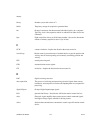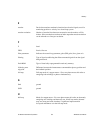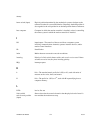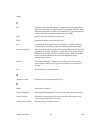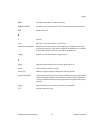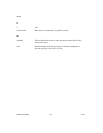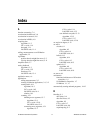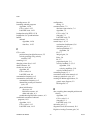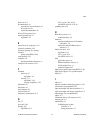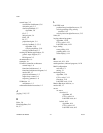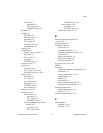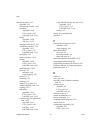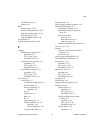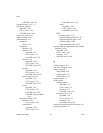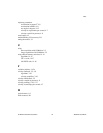Index
NI-Motion User Manual I-4 ni.com
control loop, 3-2
acceleration feedforward, 3-6
derivative gain, 3-5
dual loop feedback, 3-7
algorithm, 3-8
Ga, 3-7
integral gain, 3-4
Kdac, 3-6
Kt, 3-7
proportional gain, 3-4
velocity feedback, 3-5, 3-9
algorithm, 3-10
velocity amplifiers, 3-10
velocity feedforward, 3-5
creating NI-Motion applications, 2-1
generic steps diagram, 2-2
I/O diagram, 2-3
documentation, xiv
examples, xiv
NI motion controller architecture
control loop, 1-6
functional architecture, 1-4
functional architecture diagram, 1-6
motion I/O, 1-7
physical architecture, 1-2
supervisory control, 1-6
trajectory generator, 1-6
NI-Motion, 1-1
architecture, 1-2
software/hardware interaction, 1-2
J
jogging, 5-10, 5-17
K
Kdac, 3-6
KnowledgeBase, D-1
Kt, 3-7
L
LabVIEW code
position-based straight-line move, 5-3
velocity profiling using velocity
override, 5-19
velocity-based straight-line move, 5-13
limits, 8-1
looping onboard programs
algorithm, 14-20
C/C++ code, 14-22
LabVIEW code, 14-21
loops, timing
event polling, 4-14
graphing data, 4-14
status display, 4-14
M
master axis, 10-1, 10-4
math operations, onboard programs, 14-24
MAX configuration
real-time, C-1
tuning, 3-1
monitoring force
algorithm, 13-9
C/C++ code, 13-11
flowchart, 13-8
LabVIEW code, 13-10
Motion Hardware Advisor, xv
motion I/O, 1-7
moves
arc move
circular, 6-1
algorithm, 6-3
C/C++ code, 6-4
LabVIEW code, 6-4
helical, 6-13
algorithm, 6-14
C/C++ code, 6-15
LabVIEW code, 6-15



